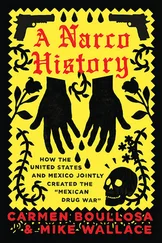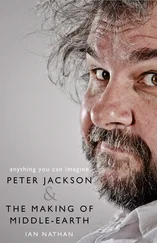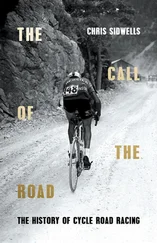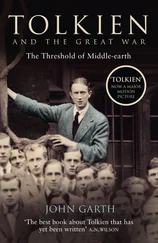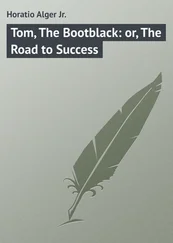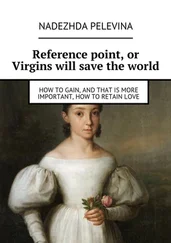Allegories, Potatoes, Fantasy and Glamour
One may now see in rather a different light the four minor prose works written by Tolkien in the late 1930s and early 1940s, those years in which The Hobbit came to term and The Lord of the Rings began to get under way – the years, one may say, when Tolkien turned away from pursuing his trade and began instead to use it. He knew he was doing this, as one can see from the little allegory ‘Leaf by Niggle’ (published 1945, but written c. 1943). Since Tolkien said in later years that he ‘cordially disliked’ allegory, it is perhaps worth repeating that ‘Leaf by Niggle’ quite certainly is one. 11 The story’s first words are, ‘There was once a little man called Niggle, who had a long journey to make’, and to any Anglo-Saxonist this is bound to recall the Old Northumbrian poem known as Bede’s Death-Song , memorable (a) for being in Old Northumbrian, (b) for being so clearly the true, last words of the Venerable Bede, England’s greatest churchman, all of whose other works are in Latin. This goes: ‘Before that compelled journey (néidfáerae) no man is wiser than he needs to be, in considering, before his departure, what will be judged to his soul after his deathday, good or evil.’ Obviously someone should have said this to Niggle! But the lines also give a good and ancient reason for carrying out the basic operation of allegory, which is to start making equations.
Thus journey = death. Niggle the painter further = Tolkien the writer. One can see as much from the accusation of being ‘just idle’, softened later to being ‘the sort of painter who can paint leaves better than trees’, or to being unable to organise his time; Tolkien was sensitive to accusations of laziness, but it is clear enough that he was a perfectionist, and also easily distracted. 12 Niggle’s ‘leaf = The Hobbit , his ‘Tree’ = The Lord of the Rings , the ‘country’ that opens from it = Middle-earth, and the ‘other pictures … tacked on to the edges of his great picture’ = the poems and other works which Tolkien kept on fitting into his own greater one. 13 Meanwhile the garden which Niggle does not keep up looks ominously like Tolkien’s professorial duties; the visitors who hinted ‘that he might get a visit from an Inspector’ remind one of that discourteous colleague of Tolkien’s, who even after The Lord of the Rings came out snapped ungraciously ‘He ought to have been teaching!’ 14 One can go on making these equations, and one is supposed to; the essence of an allegory, Tolkien thought, was that it should be ‘just’, i.e. that all the bits should fit exactly together, compelling assent (and amusement) by their minuteness. If one realises that, there is a certain bite in the place where Niggle does his painting. He keeps his great canvas ‘in the tall shed that had been built for it out in his garden (on a plot where once he had grown potatoes)’. Niggle sacrificed potatoes to paint. What did Tolkien sacrifice to The Lord of the Rings ? The real answer is, articles like those on Ancrene Wisse and the Sigelware ; after 1940 (when he was only 48) Tolkien wrote only five more, and two of these were collaborations and two others not entirely academic in style. Still, Tolkien never went over to despising the advancement of learning. It is Niggle’s expressed gratitude for Parish’s ‘excellent potatoes’ which persuades the First Voice to let him out of the Workhouse (= Purgatory). One could say that the whole tale expresses both Tolkien’s self-accusation and self-justification, and that its solution in Heaven lies in Niggle and Parish, the creative and the practical aspects of Tolkien himself, learning to work together – though what they work on, you notice, is very definitely Niggle’s Tree and Country, not Parish’s potatoes at all.
Tolkien was giving up the academic cursus honorum in the late 1930s, and he knew it. How did he justify this to himself, and how far could he reconcile the claims of ‘potatoes’ and ‘Trees’ (= scholarship and fantasy)? These questions underlie, often unsuspectedly, the three critical works roughly contemporary with ‘Leaf by Niggle’, i.e. ‘Beowulf : the Monsters and the Critics’ (published 1936), ‘On Fairy-Stories’ (first version 1939), and the ‘Preface’ to C. L. Wrenn’s revision of the Clark Hall translation of Beowulf (1940). None of these contains very much philology in the narrow sense of sound-changes or verb-paradigms, and they have accordingly been fallen on gratefully by commentators who never wanted to learn any. However, philology still remains their essential guts; while they lead forward to fantasy they also look back to and rest always on an intensely rigorous study of ‘the word’.
So, to take the last piece first, the ‘Clark Hall’ introduction has only one main point to make, and that is that words mean more than their dictionary entries. What happens if you look up Sigelware in the standard Old English dictionary of J. Bosworth and T. N. Toller? It says ‘the Ethiopians’, and that’s all. What of éacen , a word in Beowulf ? The dictionary says ‘Increased, great, vast, powerful’. To ‘the enquirer into ancient beliefs’, wrote Tolkien, only the first was right, for éacen meant not ‘large’ but ‘enlarged’ and denoted a supernatural addition of power. As for runes, Bosworth-Toller translated the Beowulfian phrase onband bead-urúne (meaninglessly) as ‘unbound the war-secret’, while Clark Hall tried ‘gave vent to secret thoughts of strife’. ‘It means “unbound a battle rune”’, declared Tolkien. ‘What exactly is implied is not clear. The expression has an antique air, as if it had descended from an older time to our poet: a suggestion lingers of the spells by which men of wizardry could stir up storms in a clear sky’ (pp. xiii-xiv). Fanciful, the shades of Bosworth and Toller might have said. If the facts point to fantasy, Tolkien could have retorted, fantasy is what we must have! The ‘Preface’ is in a wider sense a protest against translating Beowulf only into polite modern English, a plea for listening to the vision contained, not in plots, but in words – words like flæsc-homa , bán-hús , hreðer-loca , ellor-síð (‘flesh-raiment’, ‘bone-house’, ‘heart-prison’, ‘elsewhere-journey’). The poet who used these words, Tolkien wrote, did not see the world like us, but:
saw in his thought the brave men of old walking under the vault of heaven upon the island earth (middangeard) beleaguered by the Shoreless Seas (gársecg) and the outer darkness, enduring with stern courage the brief days of life (læne líf) , until the hour of fate (metodsceaft) , when all things should perish, léoht ond lif samod [light and life together]. (p. xxvii)
He ‘did not say all this fully or explicitly’. Nevertheless, the insistence ran, it was there. You didn’t need a mythological handbook of Old English if you paid attention to the words; like place-names or Roman roads or Gothic vowels, they carried quite enough information all by themselves.
The same insistence on ‘the reality of language’ permeates the British Academy lecture of 1936. There, however, it is further intertwined with beliefs about ‘the reality of history’ – rather curious beliefs which Tolkien does not seem to have wanted to express directly. The general flow of the lecture is in fact extremely sinuous, causing great trouble to the many later Beowulfians who have tried to paraphrase it; it abounds in asides, in hilarious images like the Babel of conflicting critics and the ‘jabberwocks of historical and antiquarian research’, in wildernesses of dragons and shrewdnesses of apes. However a vital point about it, never directly stated or defended, is Tolkien’s conviction that he knew exactly when and under what circumstances the poem was written. ‘At a given point’ , he says (his italics, p. 262), there was a fusion, reflected in the poem; at this ‘precise point’ (p. 269) an imagination was kindled. Since there is no unquestioned evidence at all for the date and place when Beowulf was composed (it could be anywhere from Tyne to Severn, from AD 650 to 1000), one wonders what Tolkien meant. But the nearest he approaches to an answer is via allegory once more, in his little story of the man and the tower, on pp. 248–9.
Читать дальше

